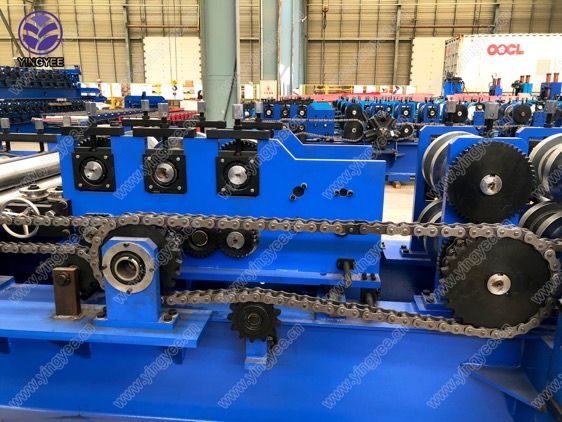
Understanding IBR Profiles Double Layer Roofing Forming Machines
In the world of construction and architecture, the choice of materials and manufacturing processes plays a crucial role in determining the quality and durability of buildings. One of the more innovative developments in the construction sector is the introduction of double layer roofing systems, particularly those utilizing IBR (Inverted Box Rib) profiles. To create these robust roofing solutions, manufacturers employ specialized equipment known as double layer roofing forming machines.
What is IBR Roofing?
IBR roofing sheets are specially designed corrugated steel sheets characterized by their inverted rib profile. This design provides superior strength and durability compared to traditional flat sheets. The ribs increase the sheet's ability to resist bending and deformation under load. IBR profiles also include a variety of widths and thicknesses, making them suitable for different structural applications—from residential to industrial buildings.
The Importance of Double Layer Roofing
Double layer roofing offers numerous benefits over single-layer systems. These include enhanced insulation, sound-proofing, and reduced weight. Such advantages make double layer roofs particularly appealing in areas that experience harsh weather or require sound attenuation, like manufacturing plants or homes near busy roads. By effectively combining multiple layers of material, these systems can also contribute to energy efficiency, lowering heating and cooling costs.
The Double Layer Roofing Forming Machine
To produce IBR double layer roofing sheets, manufacturers utilize double layer roofing forming machines. These sophisticated machines are engineered to produce two types of roofing profiles simultaneously, enhancing production efficiency while reducing material waste.
Key Features of Double Layer Roofing Forming Machines
1. Versatility These machines can produce various profiles, allowing manufacturers to meet diverse customer specifications without needing multiple machines. 2. Efficiency By producing two layers simultaneously, these machines significantly speed up the manufacturing process, leading to time and cost savings.
3. Durability Most double layer roofing forming machines are built from high-quality materials, ensuring their longevity and reliability over long production periods.

4. User-Friendly Interface Modern machines come with advanced control systems that provide operators with easy setup options, allowing for quick changeovers between profiles.
5. Minimized Waste With their precision engineering, these machines reduce the amount of scrap generated during the manufacturing process, making them an environmentally responsible choice.
The Production Process
The production process for IBR double layer roofing sheets involves several key steps
1. Material Preparation Steel coils are inspected and prepped before feeding them into the forming machine.
2. Forming As the coils pass through the machine, they are shaped into the desired profile with precision. The dual-layer design is achieved by simultaneously running two sets of rollers, crafting the outer and inner layers efficiently.
3. Cutting Once the desired lengths of roofing sheets are produced, the machine automatically cuts them to specified sizes, ready for packaging or dispatch.
4. Quality Control Finally, the sheets undergo rigorous quality checks to ensure they meet industry standards and customer requirements.
Conclusion
IBR double layer roofing forming machines represent a significant advancement in the manufacturing of roofing materials. They enable the production of strong, versatile roofing solutions that meet the needs of various construction applications. As the construction industry continues to evolve, embracing modern technologies like the double layer roofing forming machines will be essential to achieving greater efficiency, sustainability, and quality in building projects. With the ongoing developments in this field, it’s clear that IBR roofing will play a pivotal role in modern architectural designs, offering both aesthetic appeal and practical performance benefits.